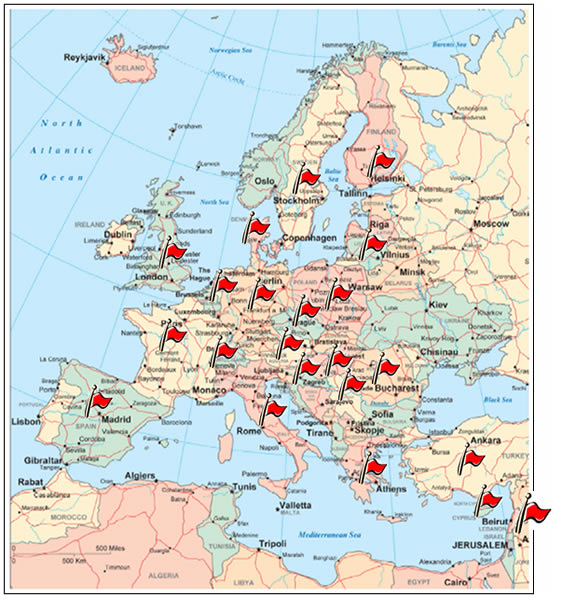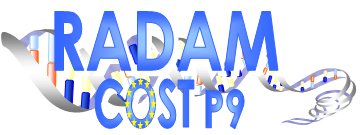INFORMACJE
FREE RADICALS IN CHEMICAL BIOLOGY 15.09.2007 - 14.06.2011 COST Action CM06003 CHEMBIORAD (2007-2011) The main objective of the Action is to promote a chemical biology approach for the investigation of free radical pathways. Chemical reactivity and molecular libraries are the start of a multidisciplinary research context "from small molecules to large systems", culminating in the biological complexity. The Action aims at improving communication and exchange among neighbouring scientific fields, such as chemistry with several domains of life sciences, specifically addressing the real barrier consisting of specialist language and tools. Four working groups (WG1-WG4) address the formation, reactivity and fate of free radicals involving bio-molecules, such as unsaturated lipids, aromatic-, cyclic- and sulphur-containing amino acid residues, sugar and base moieties of nucleic acids. Tasks concern the role of free radicals in normal cell metabolism and in damages, defining structural and functional modifications, in the framework of physiologically and pathologically related processes relevant to human quality of life and health. The Action also promotes the training of young researchers in multi-faceted research tasks.
(taken from CHIMIA 9/2008) The continuous increase in interest in free radicals associated with life sciences is motivated by the discovery of numerous processes in biology that make use of these species as key into in their mechanisms. Important links have also been found with medicine since many physiopathological conditions and aging processes are correlated with free radical formation and reactivity. In the last decade, it became clear that for an in-depth understanding of biological processes, a molecular approach, based on chemical principles and tools, was necessary. Therefore, the discipline of chemical biology was born with the scope of creating an interface between chemistry and biology, in terms, not only of methodologies, but of language and mutual comprehension as well. The interface between free radicals and chemical biology became valuable in view of the fact that several free radical-based processes are known from the molecular point of view, and which have allowed biomarkers as well as pharmacological and biological tools to be identified. Examples include lipid peroxidation and oxidative damage to DNA and proteins; processes that are currently recognized as the molecular basis of several diseases and of aging. Nevertheless, there is still a wide gap between chemical and mechanistic knowledge and their use for the investigation of biological problems. There is a need to integrate methodologies in chemistry and biology in order to apply chemical tools to the complexity of living organisms. In addition, sharing a common language among scientists with different backgrounds has proven difficult. The COST Action Free Radicals in Chemical Biology intends to fill these gaps, with four working groups dealing with the main radical processes in biomolecules such as lipids, proteins, nucleic acids and the effects of small, biologically relevant free radicals. Radical species are considered either as part of the normal metabolic functioning, or as responsible for the attack on molecules, thereby causing the onset of biological damage. Preventive and repair strategies against radical-based damage are also included in the scenario of the biological effects. The Action is open to a variety of scientists spanning from chemistry to medicine, who have contributed to the articles in this issue of CHIMIA, providing an overview of the main subjects and tasks-of the Action. The general aim is to address physiologically and pathologically relevant processes based on free radicals, in an effort to improve quality of life and health. I hope that the field of Free Radicals in Chemical Biology inaugurated by our COST Action will also represent the ideal scientific environment for the new generation of researchers and an important opportunity for achieving excellence of European science in the direction of multidisciplinary and basic and applied research. I wish to thank all authors and the Editor-in-Chief for making this special issue possible. Chryssostomos Chatgilialogiu (Consiglio Nazionale delle Ricerche, Bologna)
• GRANTY |



